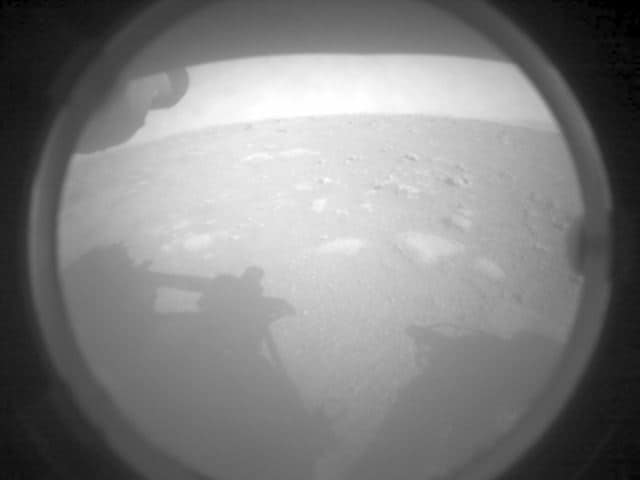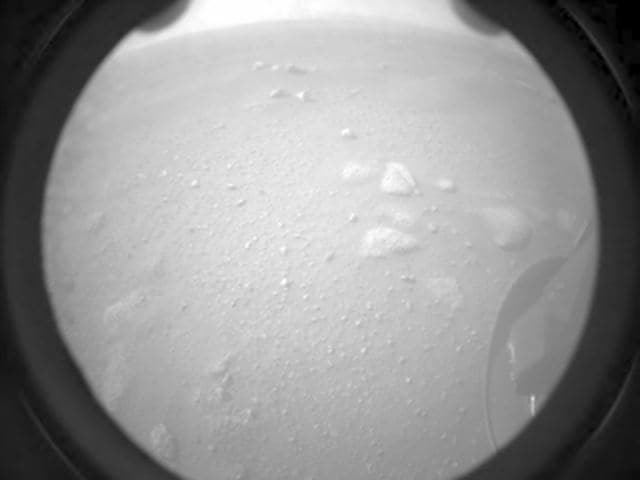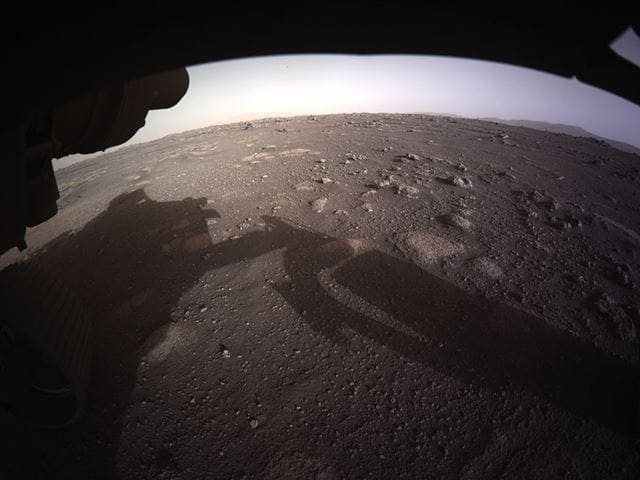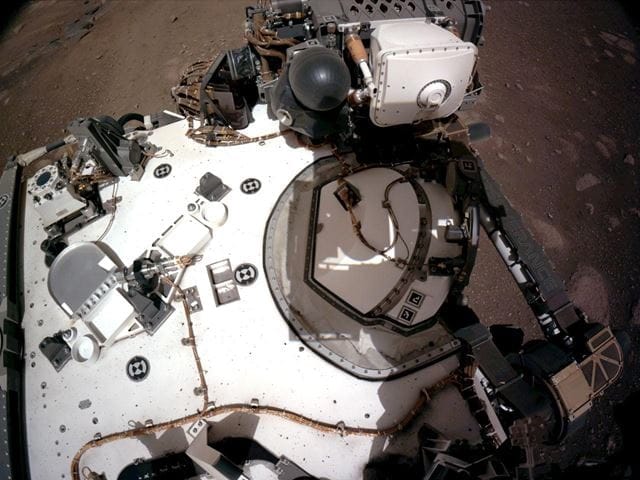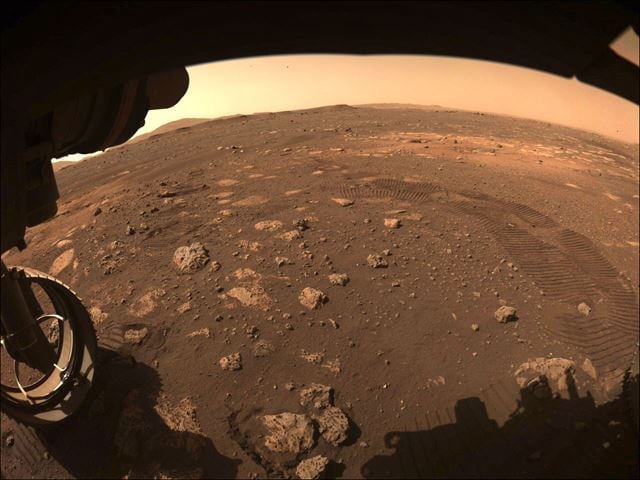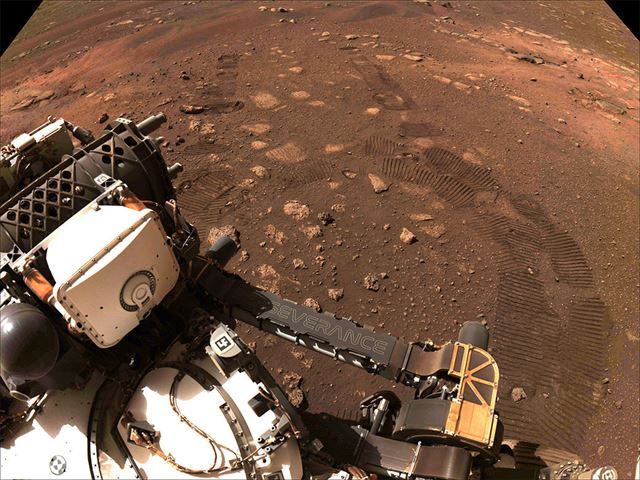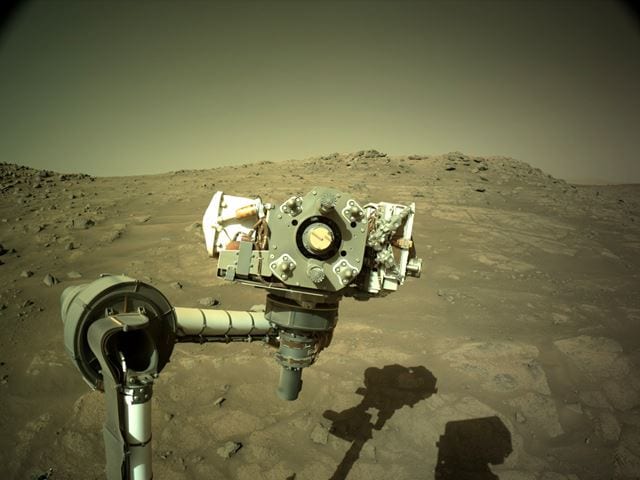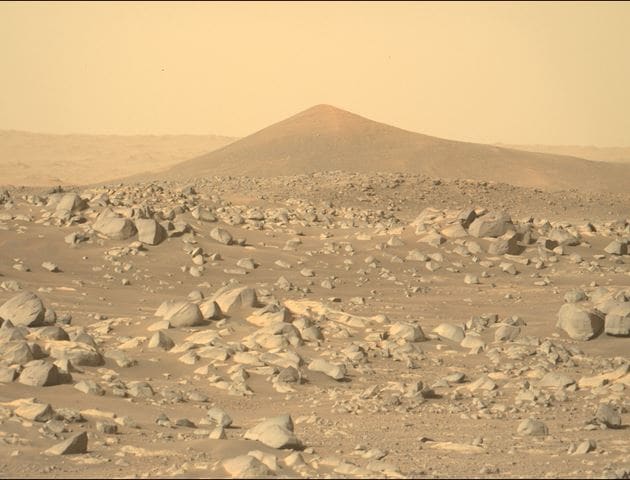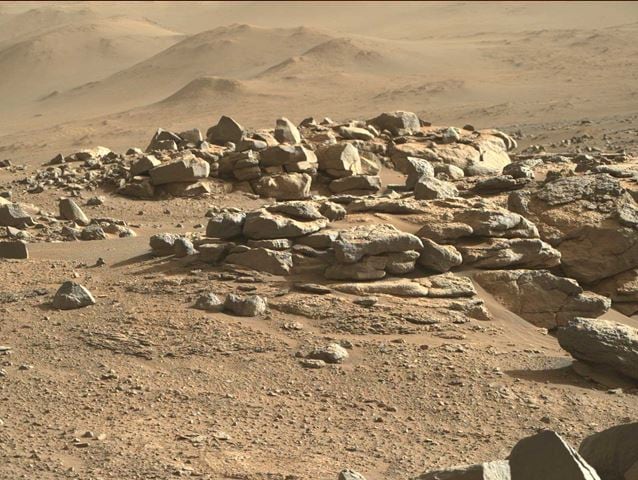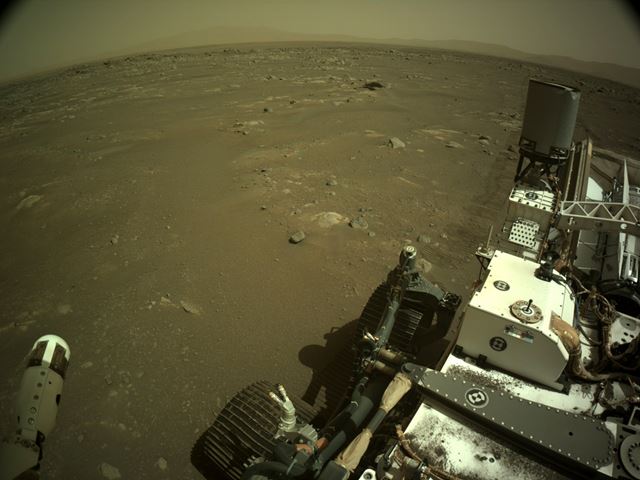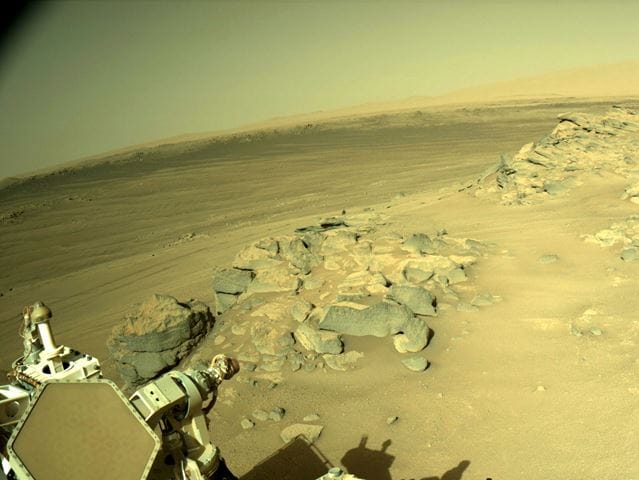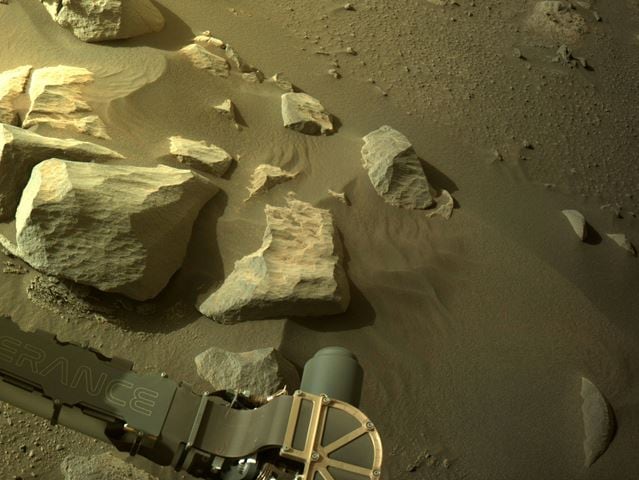RecommendMail Facebook LinkedIn
- Mobility
Year one on Mars: What has NASA's Perseverance rover mission discovered since landing on the Red Planet?
Read on for highlights of the Perseverance Mars rover mission after more than a year of discovery and collecting images with the help of Jenoptik's lens assemblies. The mission is underway with the goals of searching for signs of past life and collecting samples for research.
, Cornelia EhrlerAfter being on Mars for more than a year, NASA’s Perseverance rover is far from homesick. It has been happily at work with the help of revolutionary technology, a team of devoted scientists and the public cheering it on from Earth.
In our first blog post about Perseverance, it had just been launched in July 2020 and was on its way to the Red Planet to search for signs of ancient life and to collect data that will ultimately help scientists determine the feasibility of future human colonization (Doesn’t sound familiar? Read our first blog). This rover is equipped with three types of lens assemblies from Jenoptik: NavCams for navigational assistance, HazCams for hazard avoidance and the CacheCam for guidance in the collection of geological and atmospheric samples to be sent back to Earth and studied in detail by scientists at a later point. After more than a year of breakthroughs and challenges, NASA scientists have finished the first science campaign in the Jezero Crater. Here have been some of the highlights.
Why is NASA on Mars, anyway?
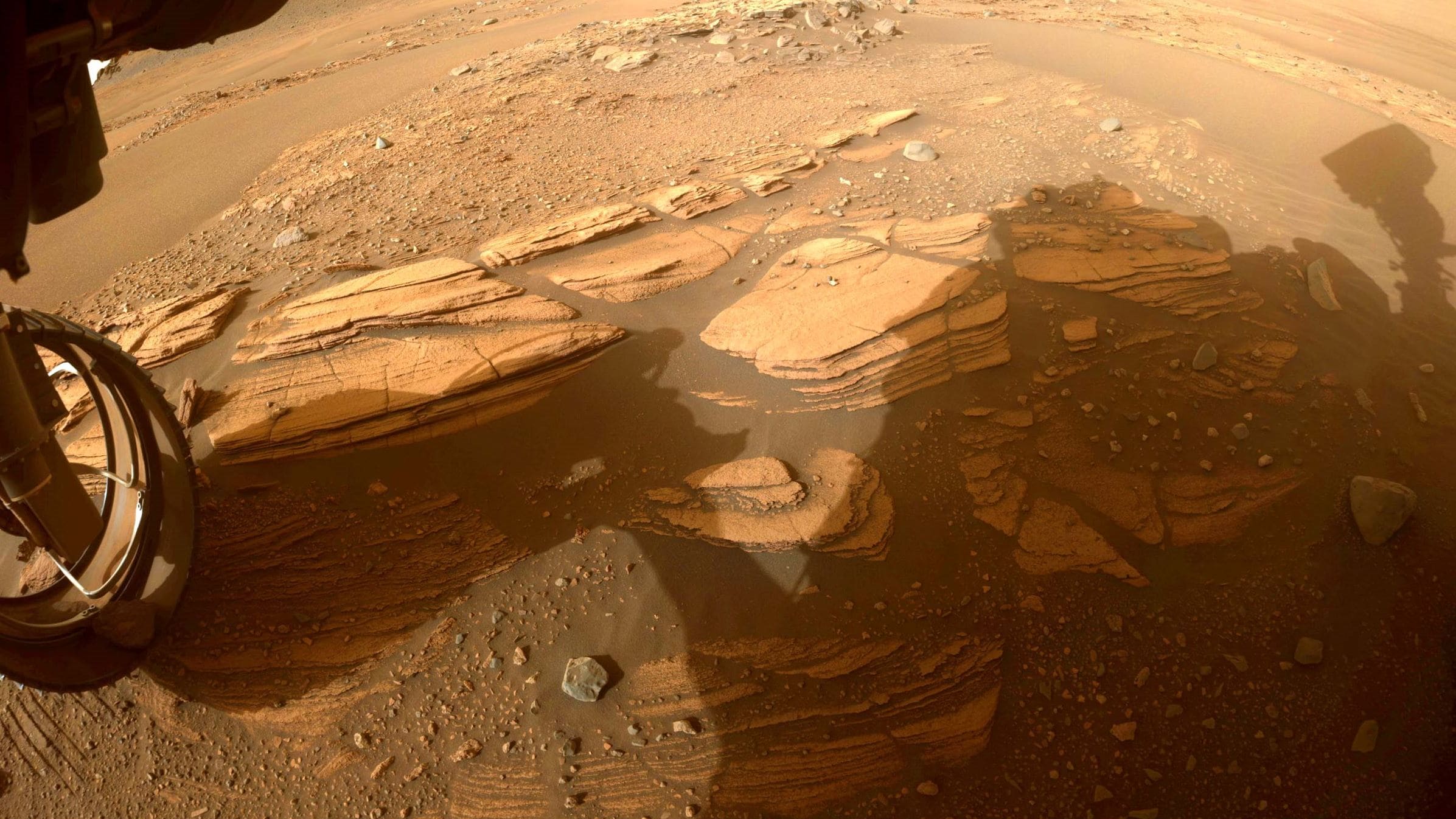
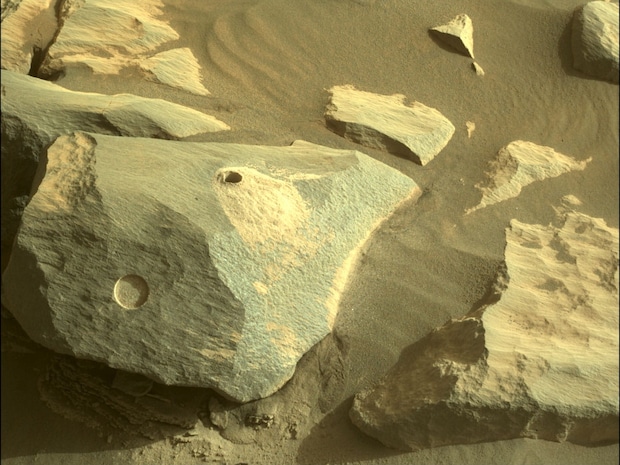
This is an image captured by the right Navcam after this rock was drilled and sampled, a.k.a caching.
The search for life and the next steps forward
The key objective of the Perseverance expedition is astrobiology, which is the search for evidence of ancient, microbial life. Scientists have been using images captured by the rover to characterize the geology of the planet, which helps them more comprehensively understand the past climate and determine if it was suitable for any form of life at some point in history. This could inevitably help answer the question if humans can explore the Red Planet in the future.
As compared to the previous Apollo mission, Perseverance went to Mars equipped with a robotic arm to abrade and drill rocks for sample caching. Caching is the collecting of rock, dust, and atmospheric samples for storage and testing. In the case of Perseverance, the samples will be retrieved in the future by another rover and intercepted by a spacecraft that will bring them back to Earth for in-depth analysis. This will enable scientists to use large, high-tech equipment that could not be incorporated in the only one-ton-heavy rover to test physical samples from Mars and learn more about geology, history, and possible life.
"Touchdown confirmed!"
After a long journey through space, Perseverance landed in February 2021 and has now been on Mars for over a year. The first images of the expedition were captured using Jenoptik’s HazCam lens assemblies, and the NavCams guided Perseverance’s first tracks on the Red Planet.
Milestones of the mission at the end of 2021 at a glance:
- Over 100,000 images taken, including two "selfie"-style images
- Collected six samples (and counting) of Martian rock or atmosphere
- Set a record for the longest rover drive in a Martian day using autonomous driving
First powered, controlled flights on Mars with Ingenuity Helicopter
First images of Mars captured by the Mars Rover Perseverance in the spring of 2021
How has Perseverance been keeping busy?

Exploring Jezero Crater
Perseverance has been rolling around the Jezero Crater, which was a full lake about the size of Lake Tahoe that straddles the border of California and Nevada, USA, with a river flowing in and out over 3.5 billion years ago. This was chosen as the first site for exploration due to its promising geological features such as river deltas with potential for harboring ancient life, escarpments where sediment accumulated at the mouth of rivers and other geological structures where accessible rock layers provide information about the timing of geological deposits.
Key findings:
- Using images to analyze the order of rock layers, scientists have promising evidence that Jezero was a lake with varying water levels. This means flooding was likely, which would have carried along debris from faraway places Perseverance cannot reach.
- Mars had a thick enough atmosphere billions of years ago to support flowing water, as indicated by the river deltas.
- The crater in which the lake formed was likely formed by magma and later altered by water several times. Scientists can use these observations to date events and understand the time period(s) when water was common.
No air, no problem—running on Mars
At the advent of its second year on Mars, Perseverance learned to “run.” It broke the record for the most distance driven on Mars by a rover on a single day, travelling almost 320 meters in mid-February 2022. It performed the entire drive using AutoNav, a self-driving software that allows the rover to make its own way around obstacles, which relies on assistance from Jenoptik’s NavCams and HazCams lens assemblies to detect and navigate around hazards.Really, humans on Mars?
Maybe someday! Scientists don’t know yet if it would be possible for human exploration of Mars, which is why they are using this mission to test oxygen production from the atmosphere using MOXIE (Mars Oxygen In-Situ Resource Utilization Experiment). This instrument produces oxygen from Mars’ carbon dioxide atmosphere to demonstrate how future explorers may be able to produce oxygen for breathing. Additionally, the MEDA (Mars Environmental Dynamics Analyzer) tool is measuring information about the weather and climate and the nature of the dust on the planet to study the feasibility of human exploration.
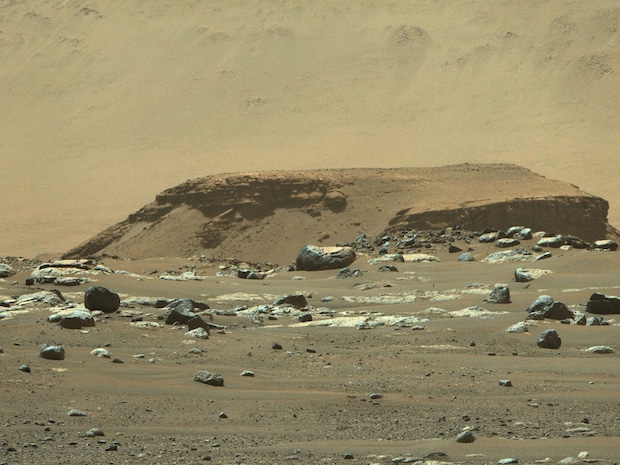
The delta where the river and Jezero Crater's lake met. This is what scientists will explore next.
What happens next?
Perseverance now has its lenses set on the delta, the next science campaign after Jezero Crater. It finished up its Jezero Crater campaign at the beginning of March 2022 by collecting more samples from boulders that may show a unique geologic chapter in the crater floor history.
At the delta where a river once flowed into the lake, Perseverance will now investigate sedimentary rock layers, clay minerals and boulders washed down far away from Jezero. Scientists believe that if microbial life did exist, then the delta would be one of the best places to seek for it in the mud layers, where life could have been buried and preserved. Along the way, the rover’s cameras will capture more visual information about the structure of the delta that scientists will use to scout a next campaign.
The mission duration is set for at least one Mars year, which is about 687 Earth days. In the meantime, a Mars sample return campaign is already in development by NASA and the European Space Agency to retrieve and study the collected samples. A lander rover mission will be initiated to fetch the samples Perseverance will drop for collection, and after being retrieved, they will be expelled from Mars using an ascent vehicle to be caught by an orbiter retriever to be received on Earth by 2031.
Life on Mars is no vacation and does not transpire without speedbumps, but there is no questioning that the Perseverance Mars rover expedition is a technological and scientific breakthrough. Jenoptik is a proud enabler of this monumental mission via the three types of lens assemblies; there’s no stopping progress and discovery with the power of light.
Contact our experts with any questions or interest in our optical technologies.
All images on this page are courtesy of NASA/JPL-Caltech. All information retrieved from: News – NASA Mars Exploration.
An overview of a year on Mars in pictures
About Cornelia Ehrler
Cornelia Ehrler has been working in Jenoptik’s Corporate Communications since 2010, primarily for external communications and initiatives which help Jenoptik develop into a focused photonics group. Additionally, she supports Jenoptik's Smart Mobility Solutions division in communicating orders and projects relating to road traffic safety. A graduate in English Studies, she has a penchant for English literature and culture, particularly from the Celtic Fringe.
